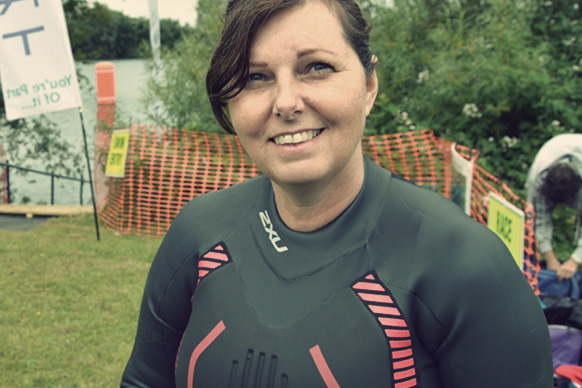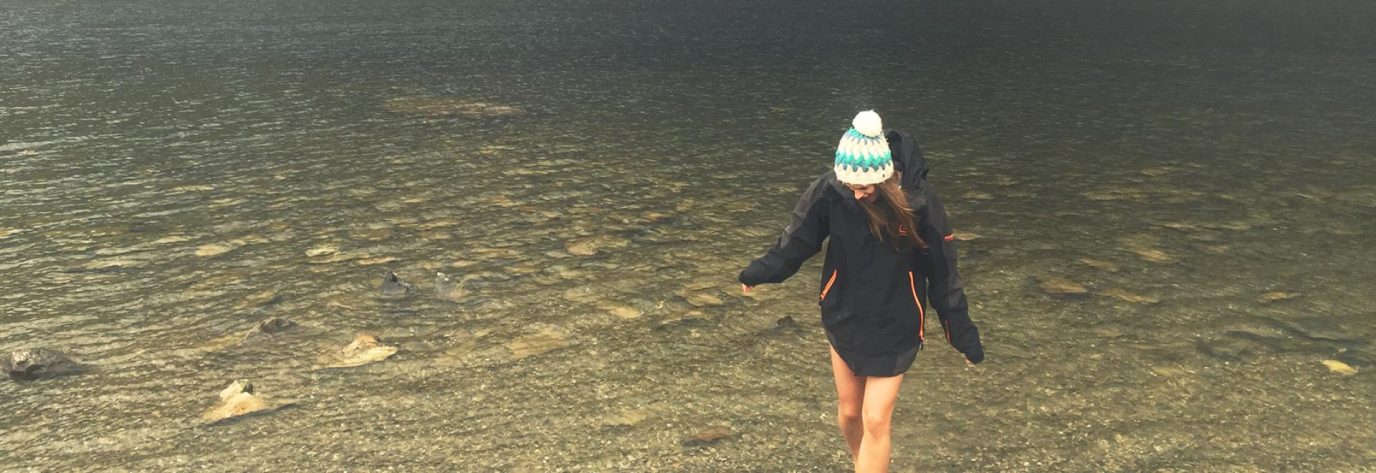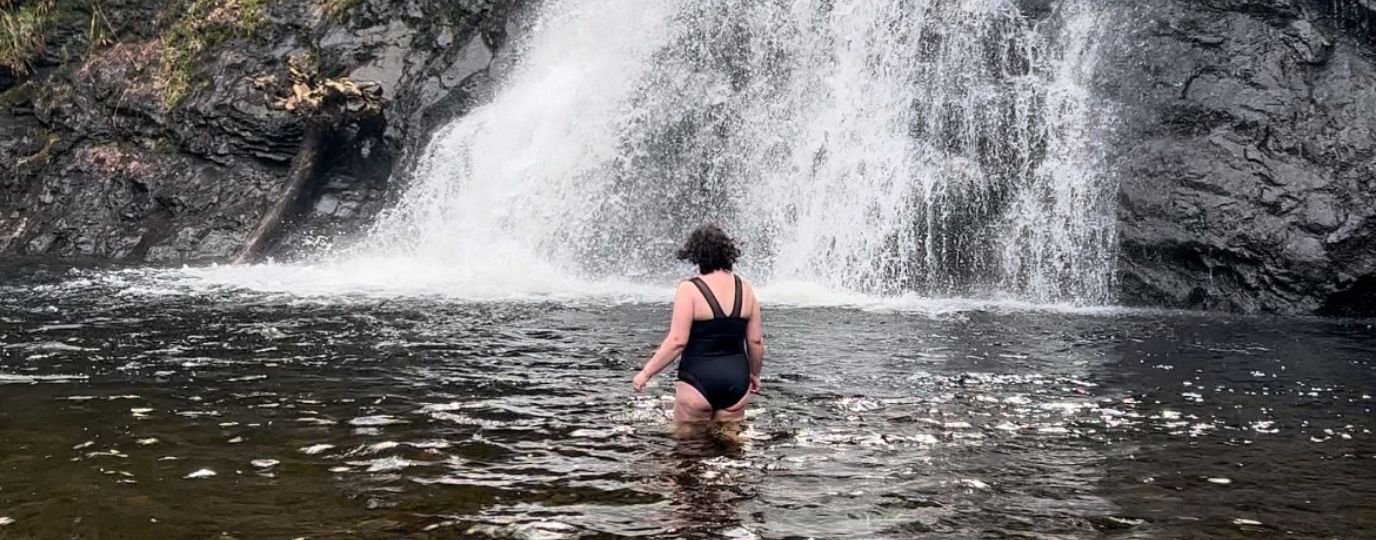An easy to read guide to open sea swimming
Guest post by Heather Scott – Swimmer with Royal Wootton Bassett Otters Masters Swimming Club. Novice open water swim competitor, returning to open sea swimming after a 30 year hiatus. Was the first female back in a wetsuit in the Big Sea Swim 2014 – 1km, as well as third fastest female competitor and seventh overall.

Heather Scott of Royal Wootton Bassett Otters Masters Swimming Club
If you’re a keen swimmer and fancy a new challenge open water swimming, especially in the sea, may be the right fit for you. With the number of outdoor swims on the rise due to the increased popularity in events such as triathlons there is more opportunity than ever to get outdoors and embrace sea and lake swimming. Open water swimming also appeals to a wide range of ages, especially masters racers who as they get older may not be able to compete on speed alone.
A good level of stamina and overall swim fitness is essential to open water swimming as races are typically 750m plus and you will find yourself often battling against currents, tides and swells which can drain energy quickly. Pool training, swimming your race distance, and more, can help you build the fitness you will need in a controlled environment. If you plan to swim in the sea for fun rather than race, it is still a good idea to build swimming strength in a pool first.
Training for open sea swimming
Honing your stroke for open water swimming in the pool before heading outdoors is also a good idea, as there are modifications that can help you cut through currents more efficiently and expend less energy. Swim coaches and online resources can help make a big difference (I recently helped to put together two training guides which you can see here).
The other key preparation to make is mentally as swimming outdoors can be daunting, disorientating and draining. To overcome these hurdles it’s a good idea to practice at your own pace in open water (i.e. lake swimming) ahead of race day. A swim buddy also helps in outdoor practice to reassure and keep your mind away from being uncomfortable about what’s in the water.
Training outdoors is also essential to acclimatize you to the cold which can sap your energy and make the swim less enjoyable if you’re not prepared for it. To acclimatize you should sit/stand in the water at the shore, wet your face, fill your wet suit with water and get your body use to the temperature.
Work up your confidence outdoors, in terms of swimming distance and know that it’s okay to abandon a practice if you’re not comfortable or out of your depth – like physical training your mind may take some practice to get use to this type of event.
Outdoor training also allows you the opportunity to practice sighting which is fundamental to having a good race and a safe, fun swim. It is a good idea to sight by both buoys and landmarks so that if you can’t see the buoy over swells you can make sure you are on track.
Equipment
Summer sea swim races in the UK often have two categories – with or without a wet suit. Your choice here comes down to personal preference and experience but a wet suit is strongly recommended for novice swimmers. It adds more weight and can feel restrictive until you become more experienced but the benefit of additional buoyancy outweighs these cons and offers peace of mind as well as the suit itself providing added warmth.

Make sure you practice swimming in your wet suit before your race so you can get use to it, adapting your technique as needed. You can buy (more on this in the Beginners Guide to Surfing) or hire wetsuits – hiring for a season offers you the opportunity to see if you like open water swimming before investing in a good suit.
You’ll need goggles and a swim hat (two hats are often recommended when racing – your own with the events colour cap on top – to provide a thermal layer). Doubling up on swim hats for race day also means you can sandwich your goggle straps securely. Swim caps are also available which cover your ears and keep them warm.
Race day!
Tips for race day/taking the plunge
Some useful tips for a safe, successful swim on the day:
- Familarise yourself with the shore line so you can use this for reference when sighting as any marker buoys at sea tend to be further apart than those in lakes and not always clearly visible. The shoreline can therefore prove an invaluable reference when disorientated.
- Give yourself plenty of time to arrive and register as this is one less thing to think about.
- Listen carefully to the race briefing and safety advice, it will give you essential information about currents – strength and direction; you can then work out from the race route whether/when you will be working against or with currents/tides.
- If you are swimming in the sea for fun always check with the lifeguard before going in to find out what sea conditions are – tide times and currents. Pay heed to the flags marked out on beaches and at sea as they are there for your safety!
- If wearing a wet suit, scoop water into it once you’re wearing it to provide a thermal level and help you acclimatise quicker
- Drink plenty of fluids before and after your swim, especially if conditions are hot as you’ll dehydrate surprisingly quickly when wearing a wet suit.
- Finally, have fun and enjoy your race.





